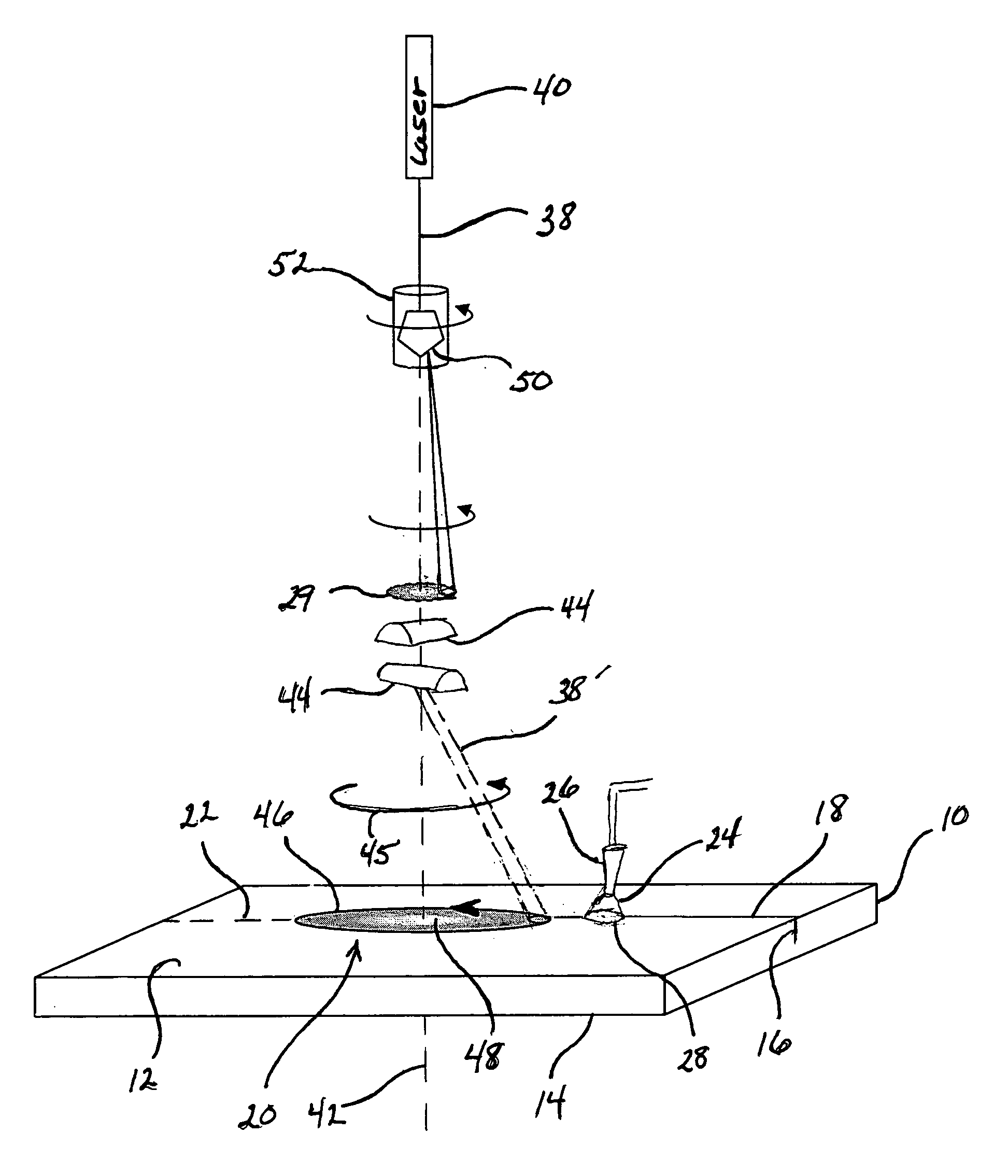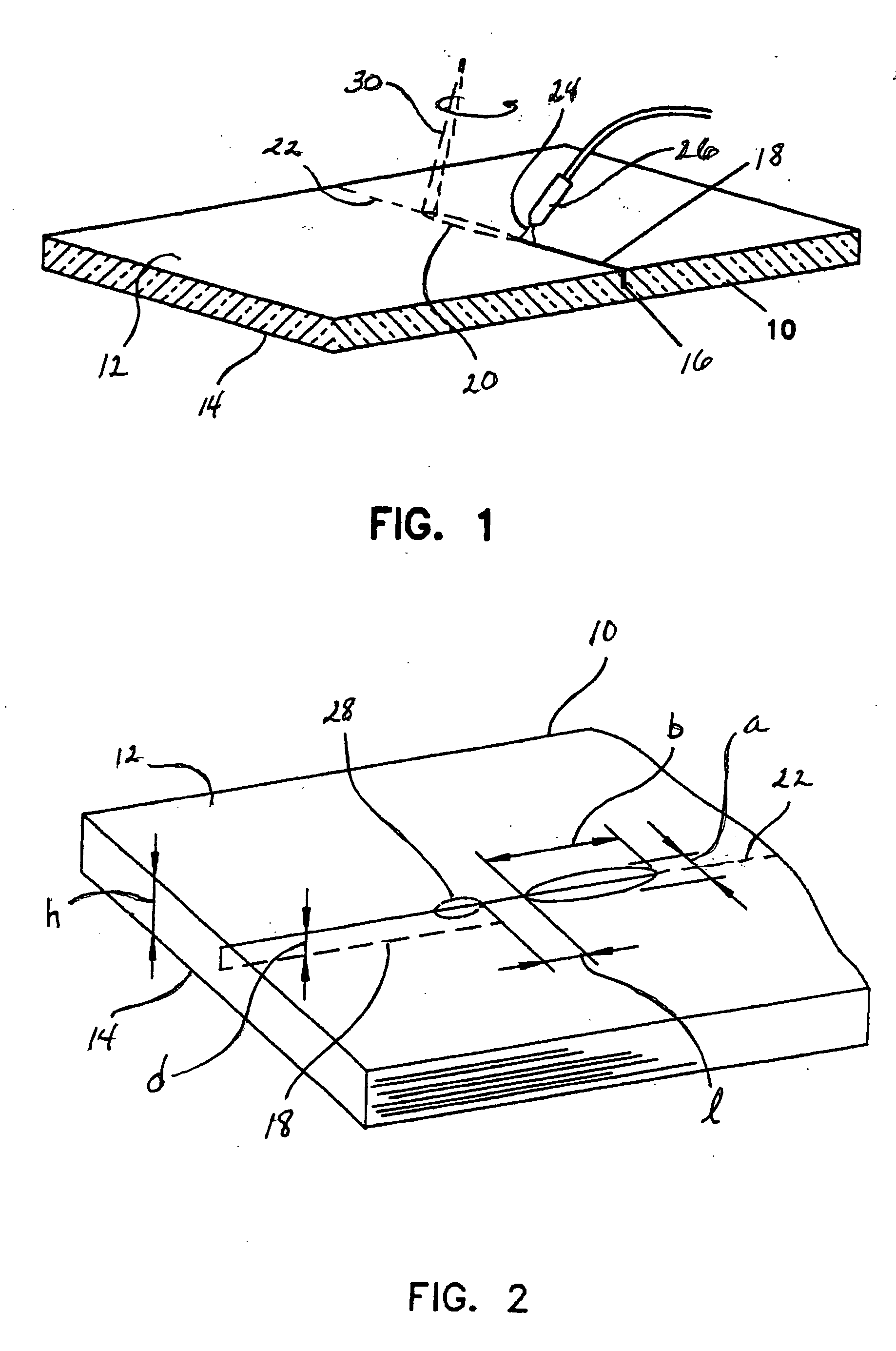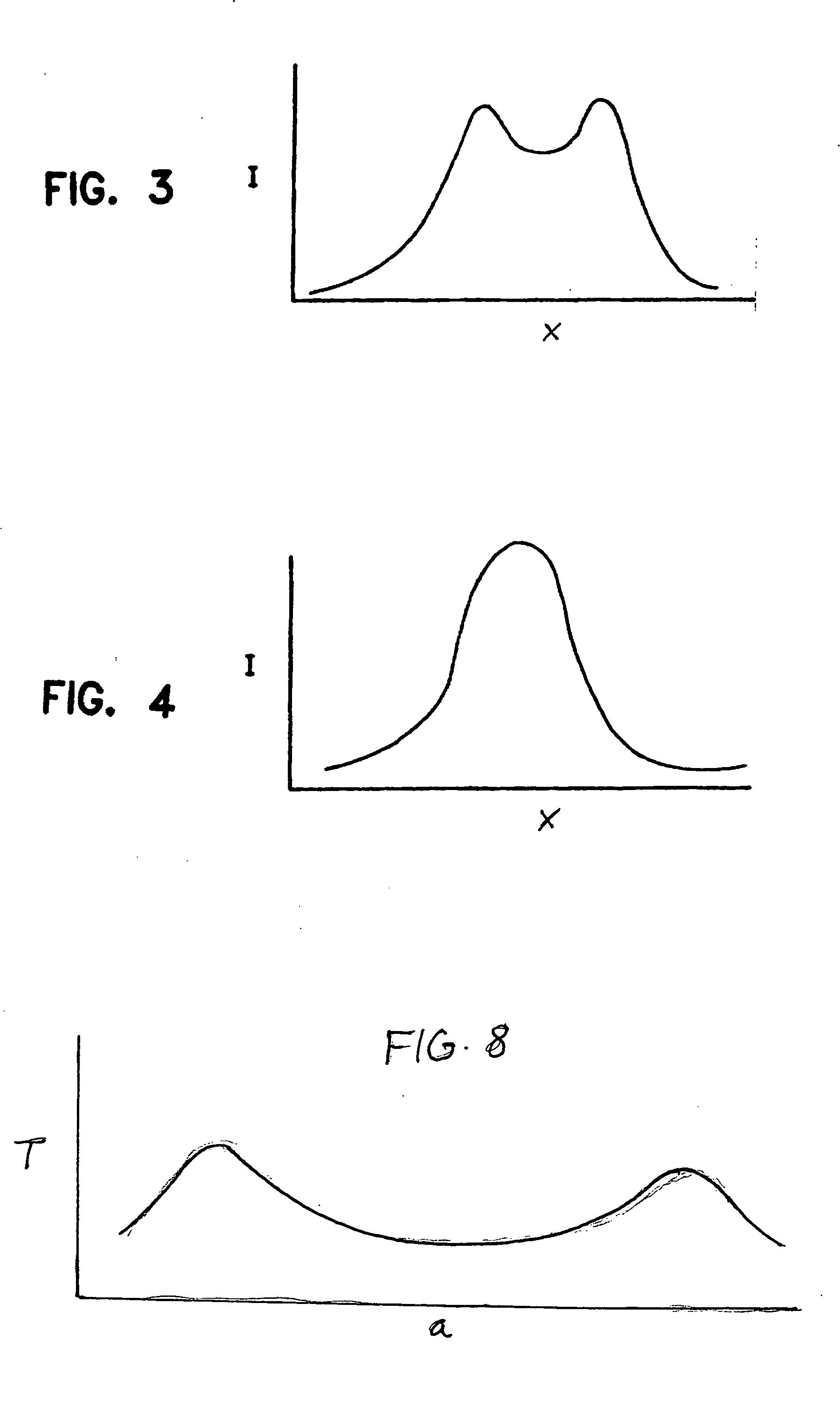Process and apparatus for scoring a brittle material
a technology of brittle materials and scoring methods, applied in glass making apparatus, manufacturing tools, transportation and packaging, etc., can solve the problems of increasing the cost of multi-mode lasers, and increasing the need for maintenan
- Summary
- Abstract
- Description
- Claims
- Application Information
AI Technical Summary
Benefits of technology
Problems solved by technology
Method used
Image
Examples
example
[0062] A single-mode CO2 laser having a power of between about 250 and 500 watts is passed through a collimator, wherein a substantially collimated beam exits the collimator. The collimated beam is thereafter passed through an integrator lens which redistributes the single beam into a plurality of discrete beams. The discrete beams are impinged upon the surface of a glass sheet in an elongated pattern, thereby forming an elongated heating zone wherein the optical power impinging on an outer region of the heating zone is greater than the optical power impinging upon a central portion of the elongated heating zone. Relative motion is developed between the heating zone and the glass sheet wherein the heating zone traverses the glass sheet at a rate of at least about 300 mm / s. A coolant is jetted against the glass sheet behind the traversing heating zone. The heating zone is at least about 30 mm in length along a direction parallel with the direction of relative motion.
PUM
| Property | Measurement | Unit |
|---|---|---|
| length | aaaaa | aaaaa |
| diameter | aaaaa | aaaaa |
| diameter | aaaaa | aaaaa |
Abstract
Description
Claims
Application Information
 Login to View More
Login to View More - R&D
- Intellectual Property
- Life Sciences
- Materials
- Tech Scout
- Unparalleled Data Quality
- Higher Quality Content
- 60% Fewer Hallucinations
Browse by: Latest US Patents, China's latest patents, Technical Efficacy Thesaurus, Application Domain, Technology Topic, Popular Technical Reports.
© 2025 PatSnap. All rights reserved.Legal|Privacy policy|Modern Slavery Act Transparency Statement|Sitemap|About US| Contact US: help@patsnap.com



